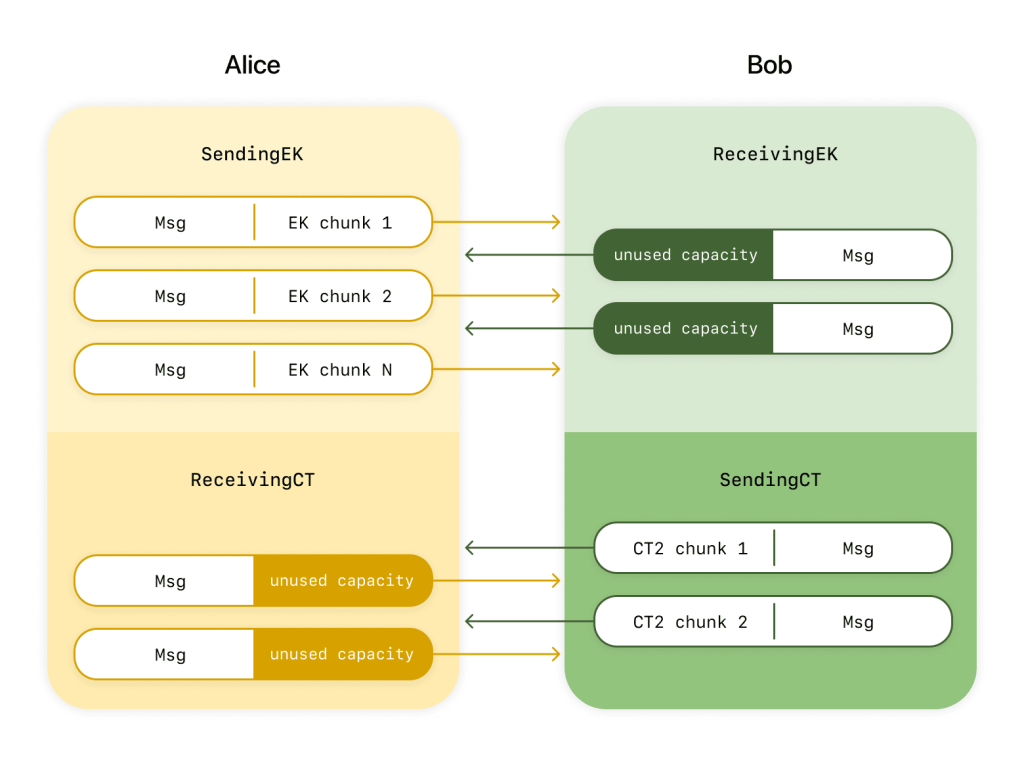Signal, the widely used end-to-end encrypted messaging platform, has unveiled a pioneering cryptographic advancement designed to counter the looming threat posed by quantum computers.
Dubbed the Sparse Post Quantum Ratchet (SPQR), this protocol integrates seamlessly with Signal’s existing Double Ratchet to form the Triple Ratchet, providing continuous quantum-resistant protection without compromising current security guarantees.
Revolutionary Triple Ratchet Protocol Debuts
The core of Signal’s innovation lies in merging its proven Double Ratchet protocol with the newly developed SPQR.
This hybrid ratchet ensures that each message retains the coveted properties of forward secrecy, where a compromise of a current session key cannot decrypt past messages, and post-compromise security, where exposure of a session key does not endanger future messages.
By extending quantum resistance beyond initial key exchanges first addressed by PQXDH (Post-Quantum Extended Diffie-Hellman) throughout entire conversation lifecycles, SPQR successfully mitigates “harvest-now-decrypt-later” attacks, in which adversaries capture encrypted traffic today with the intention of decrypting it once quantum computers gain sufficient power.
Seamless Implementation for Users
Signal’s rollout of the Triple Ratchet has been architected to be entirely transparent to its user base. The protocol upgrade operates behind the scenes, automatically transitioning chats to quantum-resistant encryption without interrupting message flow or requiring manual updates.

During the transition, intelligent downgrade mechanisms permit seamless interoperability between devices on different protocol versions, preserving maximum available security under varying conditions.
To address concerns around increased data usage due to larger post-quantum keys, Signal employs advanced bandwidth optimization techniques, including erasure codes and streamlined state machines, to minimize message size inflation and network overhead.
Rigorous Academic Foundation and Verification
From its inception, SPQR was engineered with formal security guarantees.
Signal collaborated with leading academic and industry partners such as PQShield, the National Institute of Advanced Industrial Science and Technology (AIST), and New York University to develop and peer-review the protocol at premier cryptography conferences, including Eurocrypt and USENIX Security.
Utilizing formal verification tools like ProVerif, the team produced machine-checked proofs that the Triple Ratchet upholds its intended security properties.
This verification framework is integrated into Signal’s continuous integration pipeline, ensuring that every code update undergoes automated proof validation to prevent regressions.
The introduction of SPQR underscores Signal’s commitment to anticipating future cryptographic challenges.
By embedding quantum-resistant mechanisms within its core messaging protocol and coupling them with a frictionless user experience, Signal positions itself at the forefront of secure communication platforms, ready to withstand both today’s threats and those of the quantum era.
Cyber Awareness Month Offer: Upskill With 100+ Premium Cybersecurity Courses From EHA's Diamond Membership: Join Today